A sitar tuning peg or “kunti” works on the basis of friction. The peg is conically ground and is clamped into a conical hole. After some time, the surfaces will wear out and the peg will go deeper and deeper into the hole. Eventually it comes out deeper and deeper on the other side.
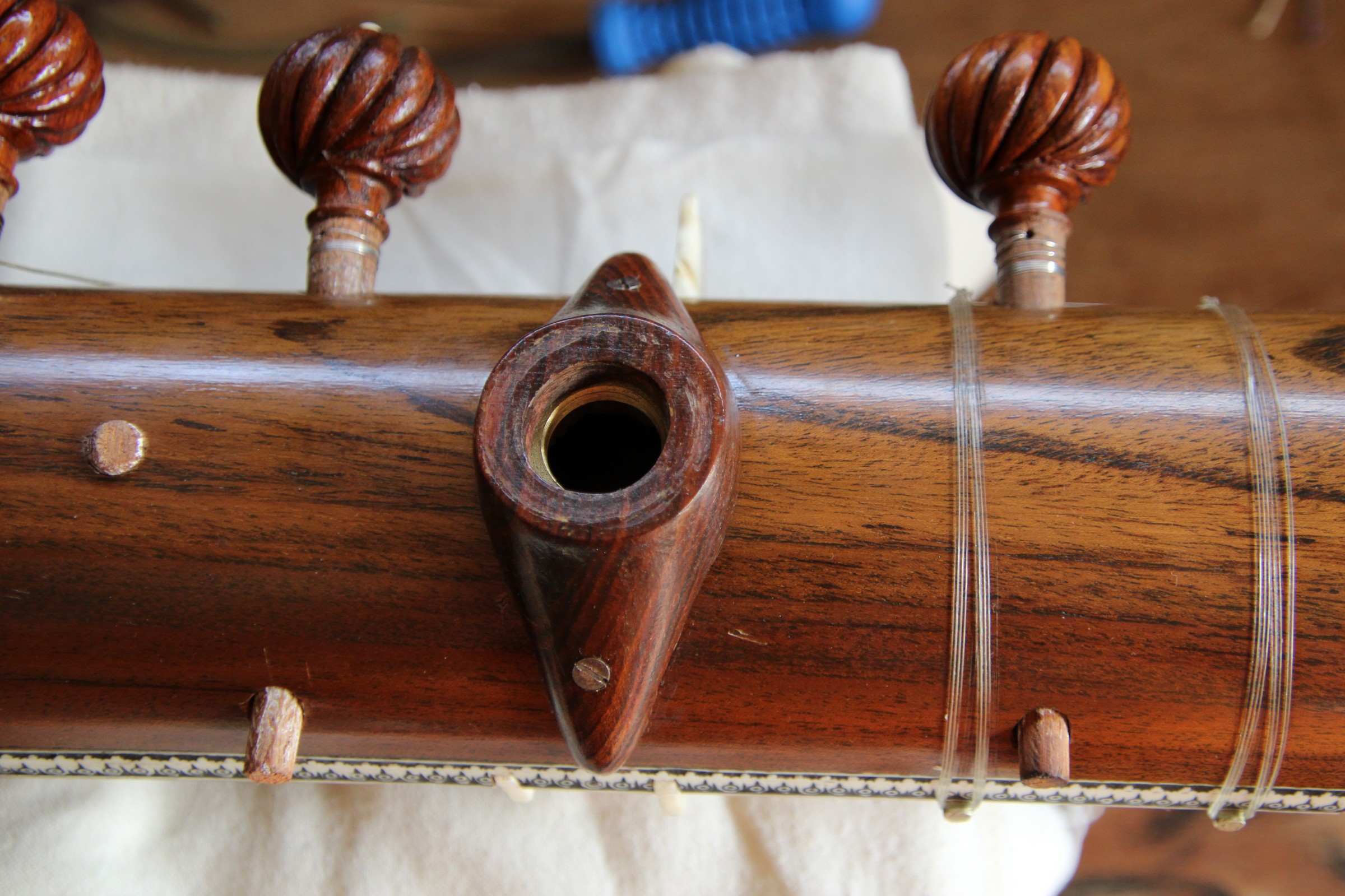
Usually the sitar pegs are made of a hard wood (ebony or rosewood or sheesham) and thus the hole in the neck, which is made of a softer wood (tun or teak), will wear out.
Time to mount new pegs that are a bit thicker. But actually there is nothing wrong with the original tuning pegs. A solution is to provide the holes with a new layer: the kunti bushing.
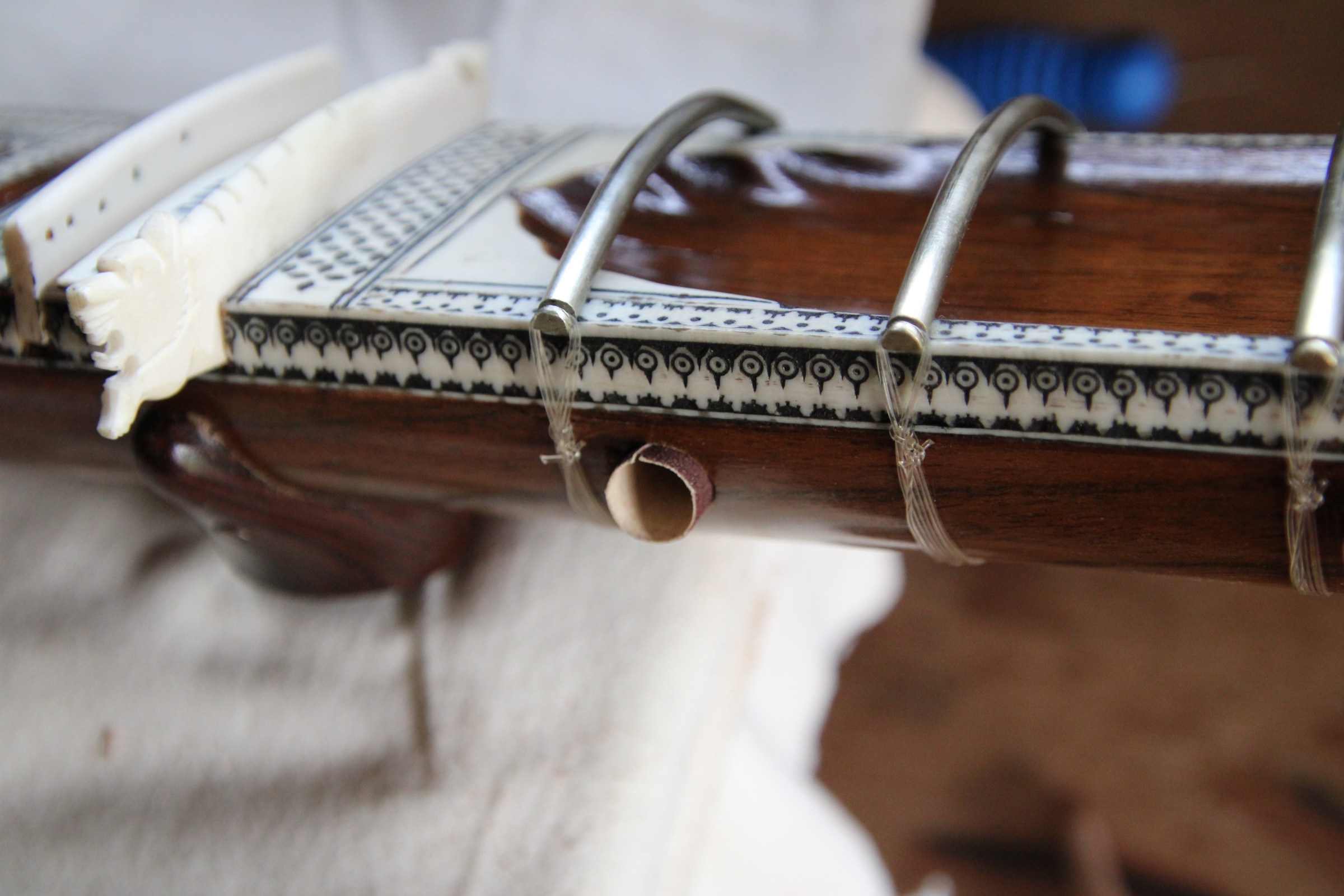
For this you can use sandpaper of a good professional quality. The back side, which is made of strong paper, can serve as a layer of wood while the rough sanding side provides an excellent adhesion inside the hole.
It is a matter of cutting out a well-fitting piece of sandpaper and gluing it properly into the hole. Make sure that the sandpaper fits perfectly and does not overlap. Also make sure that no glue gets between the kunti and the bushing. The glue should only be sitting between the rough sandpaper-side and the hole in the neck.
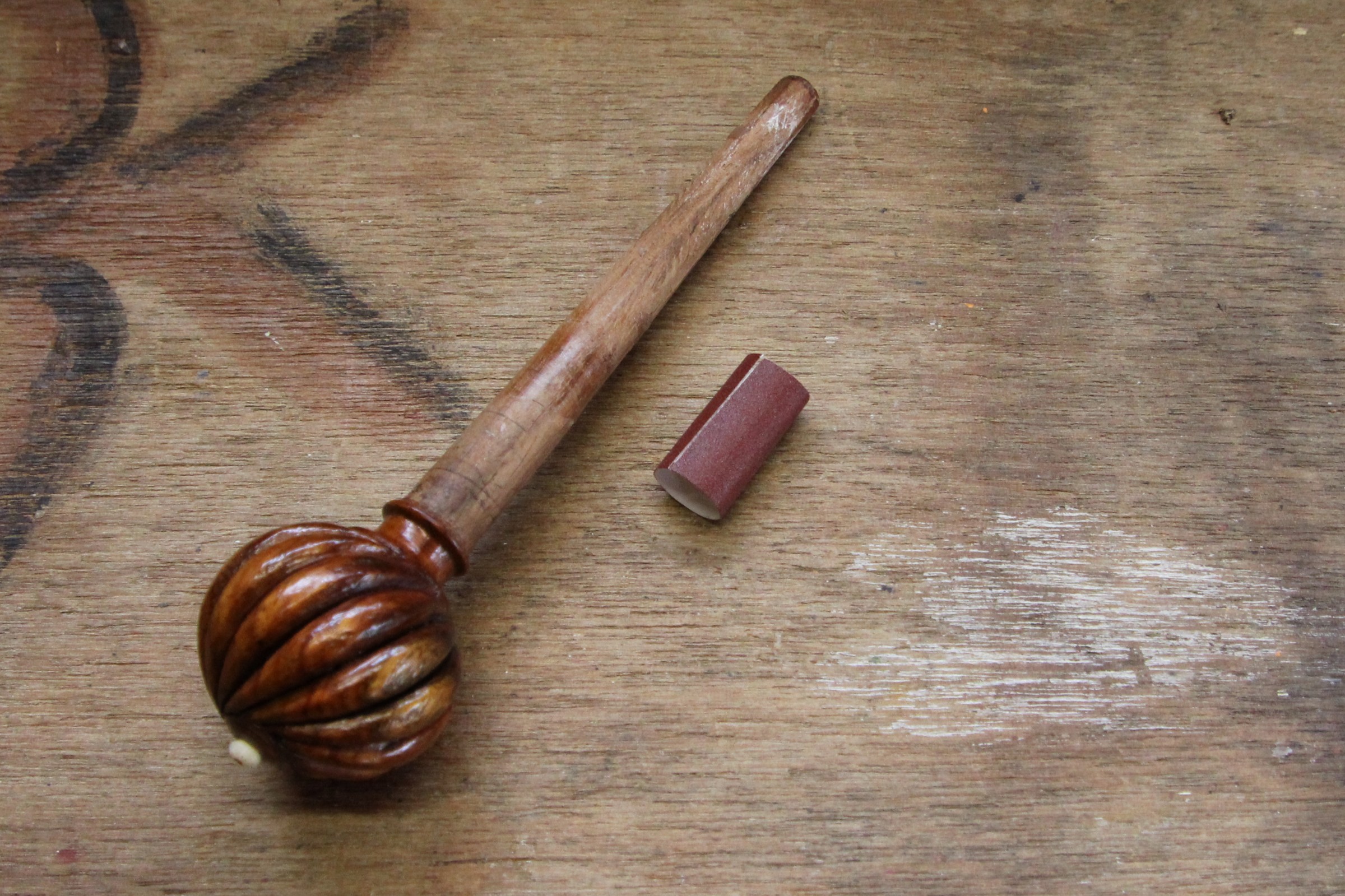
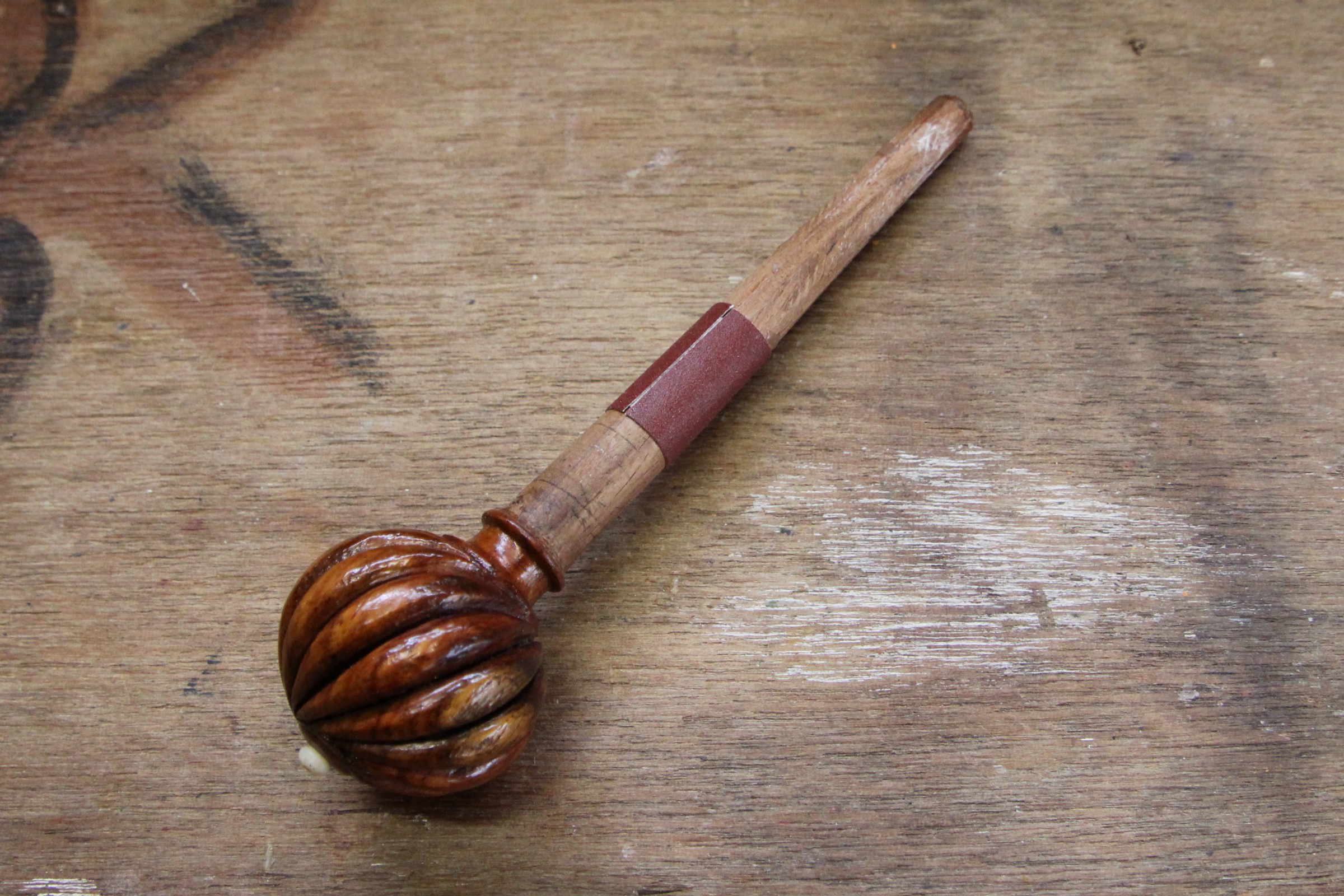
You can use the peg itself to fit the sandpaper in the hole and as a clamp to keep the sandpaper in place while drying.
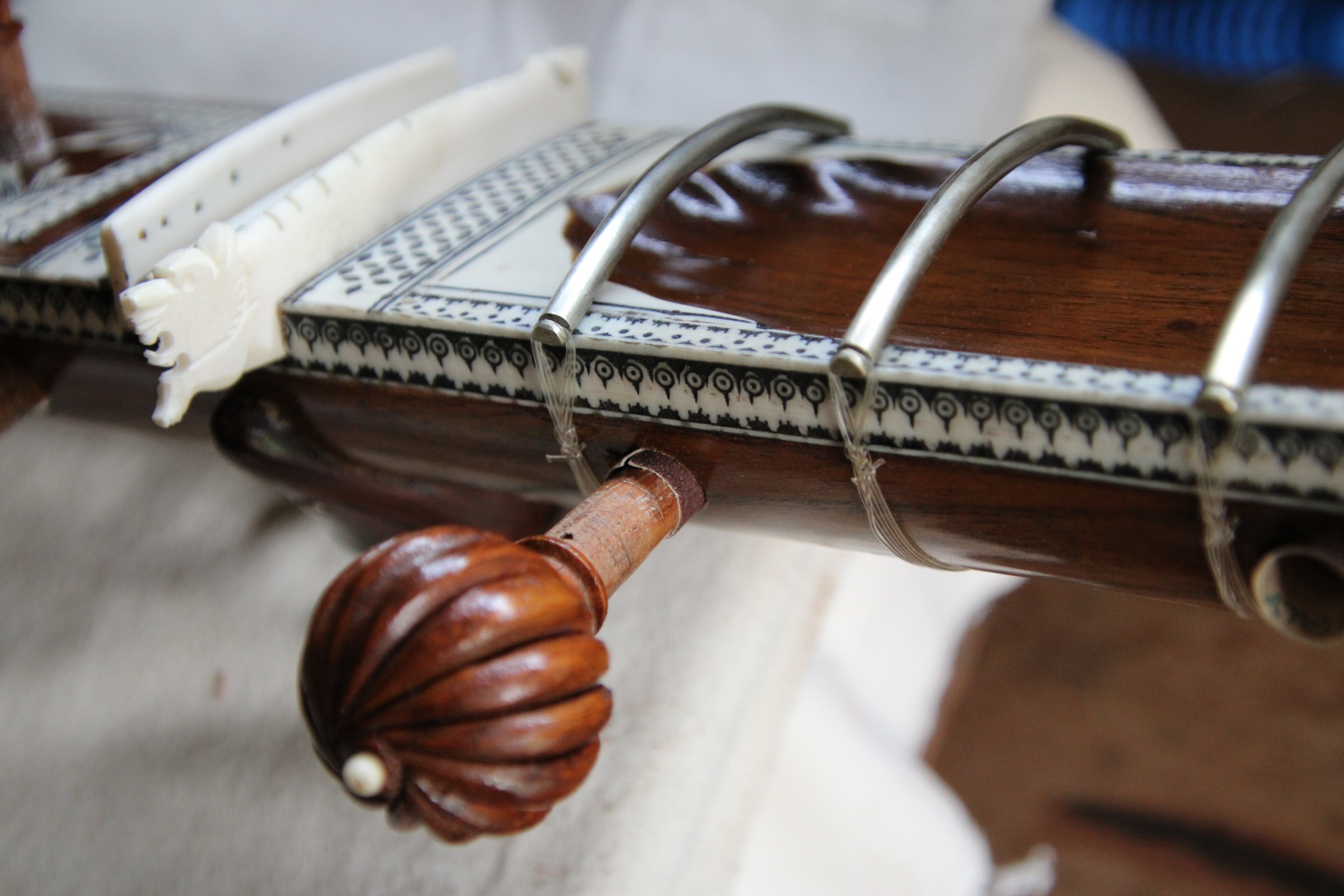
When everything is dry, you can cut away the excess piece of sandpaper with a sharp chisel.
In this way, the original pegs can continue to be used. Keep in mind that this bushing will have to be replaced after a while. The paper will wear out faster than the wood of the neck. It is best to look out for professional quality sandpaper. Then you will be at ease for a long time!



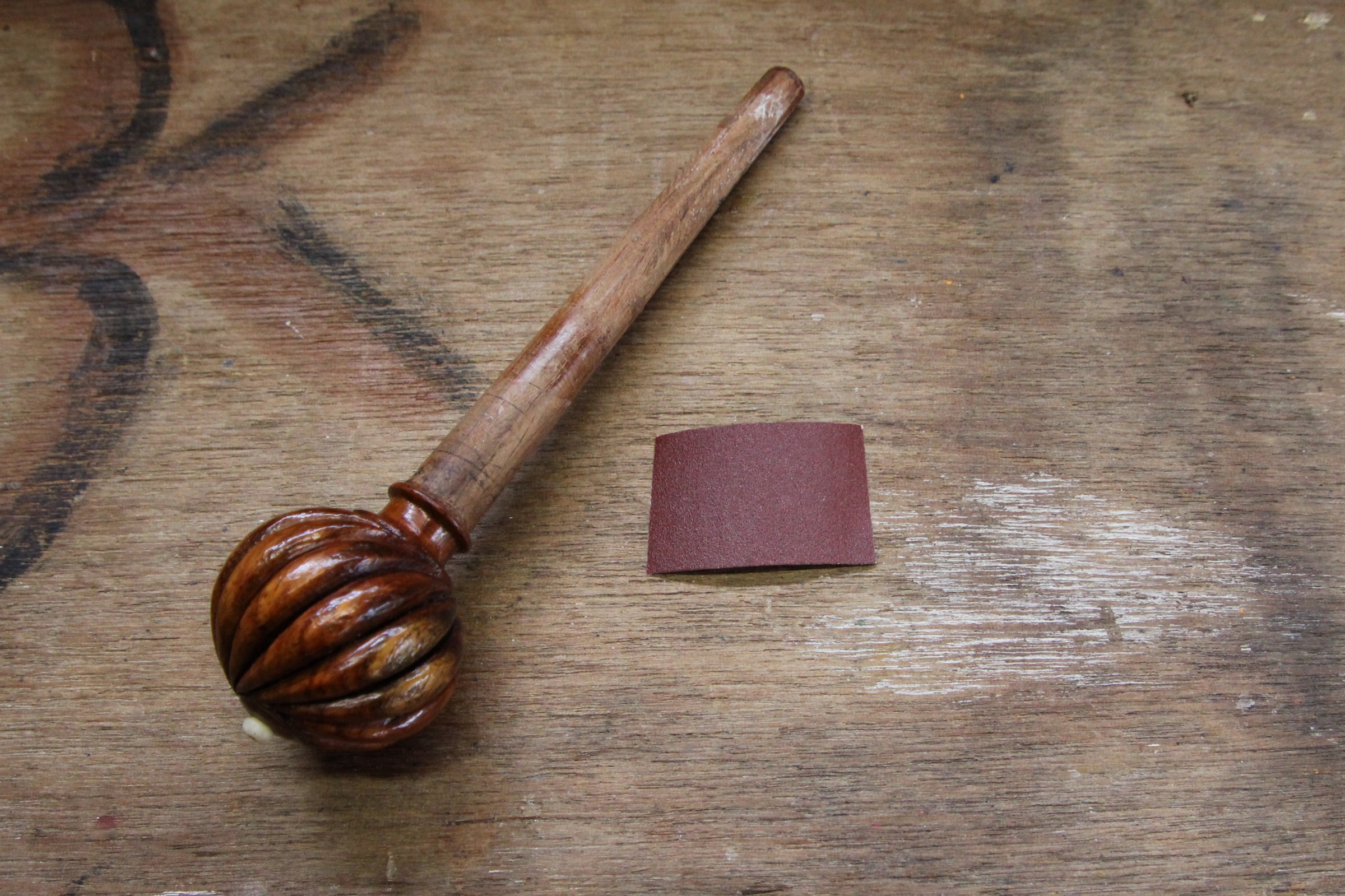
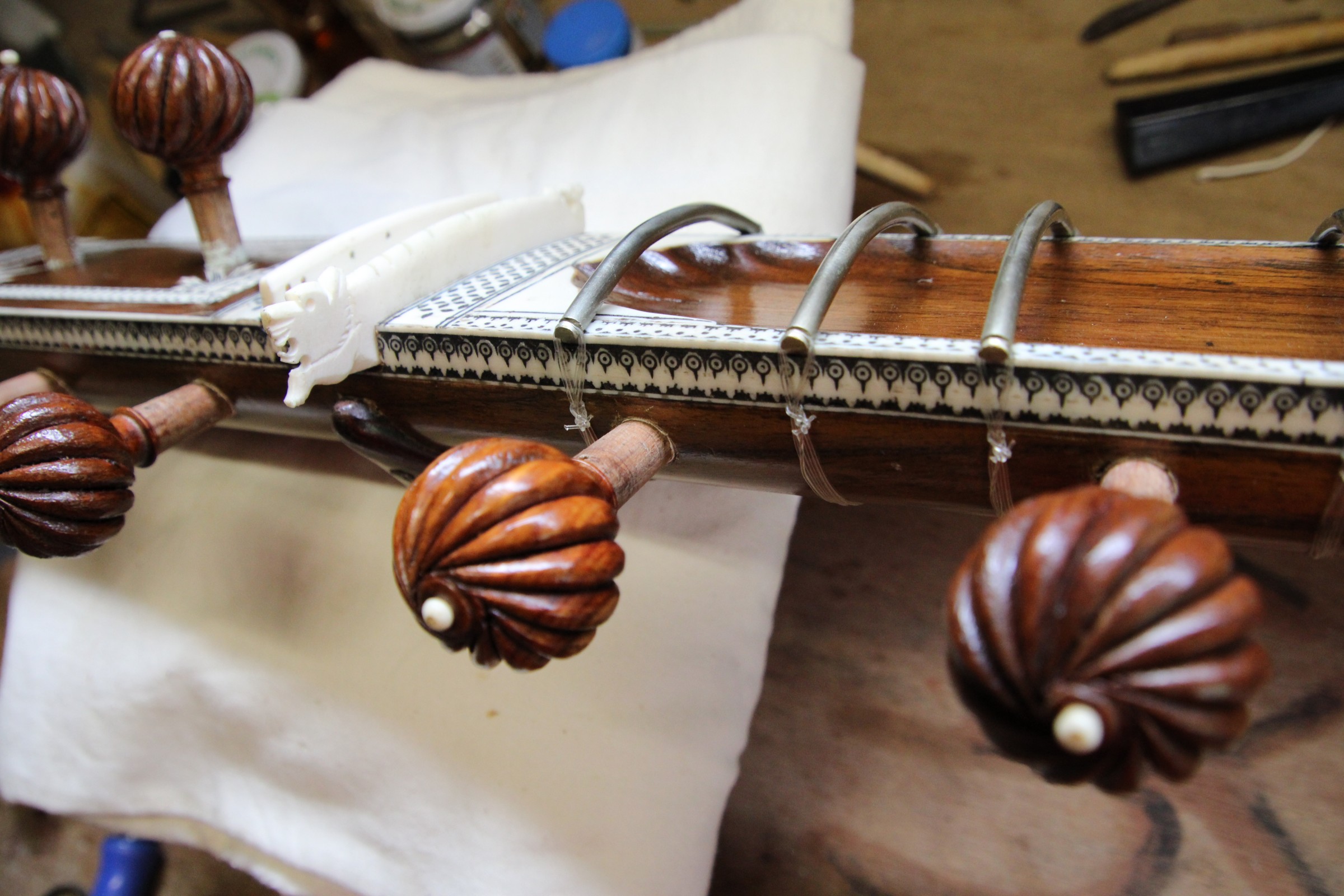
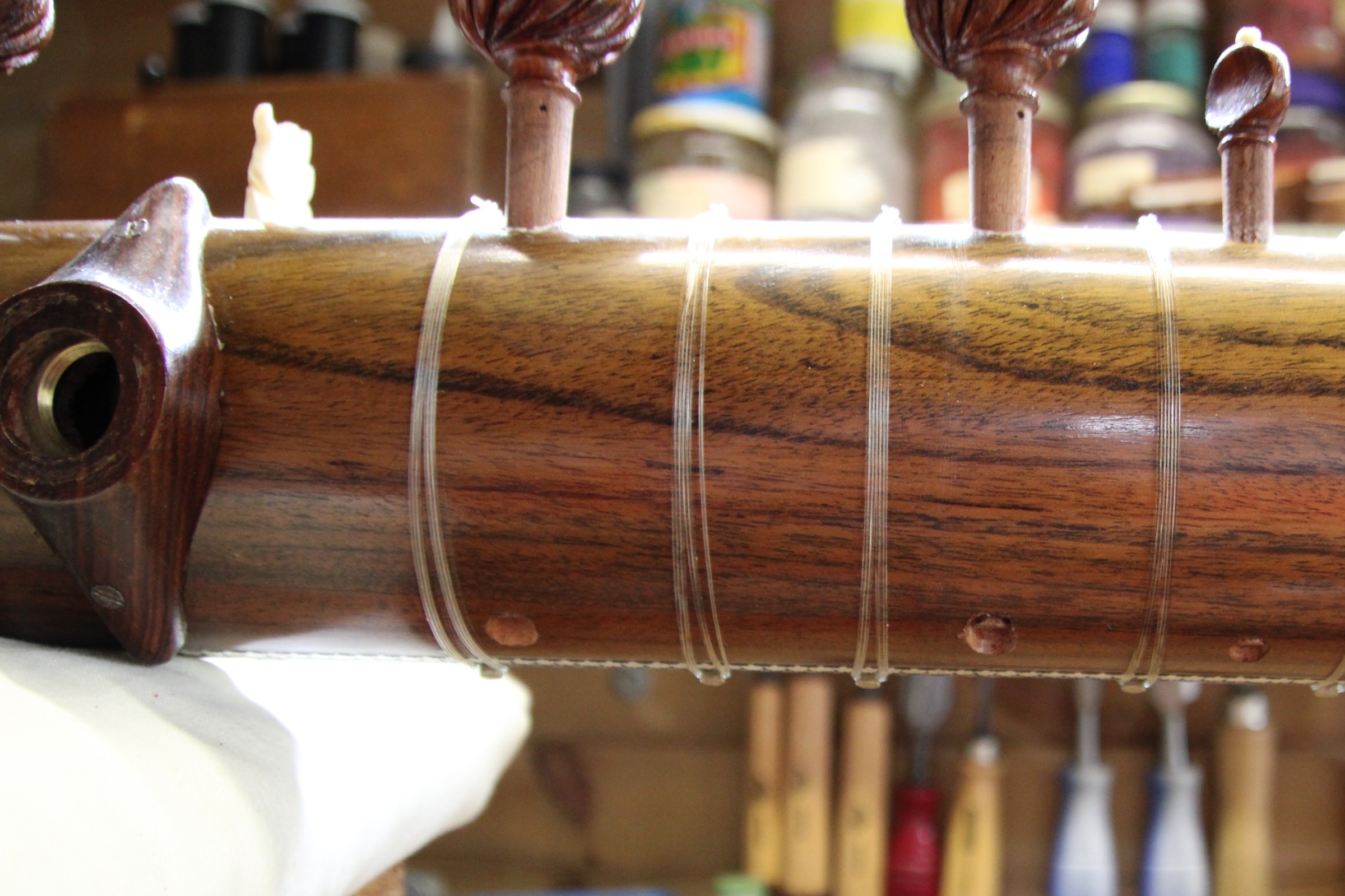
Thanks a lot. You mean that the rough side of the sand paper should face against the hole and glued. What should be the grade of sand paper means 80 / 100/etc. Can we use waterproof sandpaper.
Dear Kausik,
You got that right. The rough side must be glued. I usually use grid 100 – 150, but the most important thing is that the back side is strong and durable. And this is usually more likely to be found on professional quality sandpaper. Waterproof sandpaper is not so suitable because the wood glue you best use to glue the paper in the hole is made on a water-based basis. Waterproof sandpaper repels water and does not hold as well on wood glue.